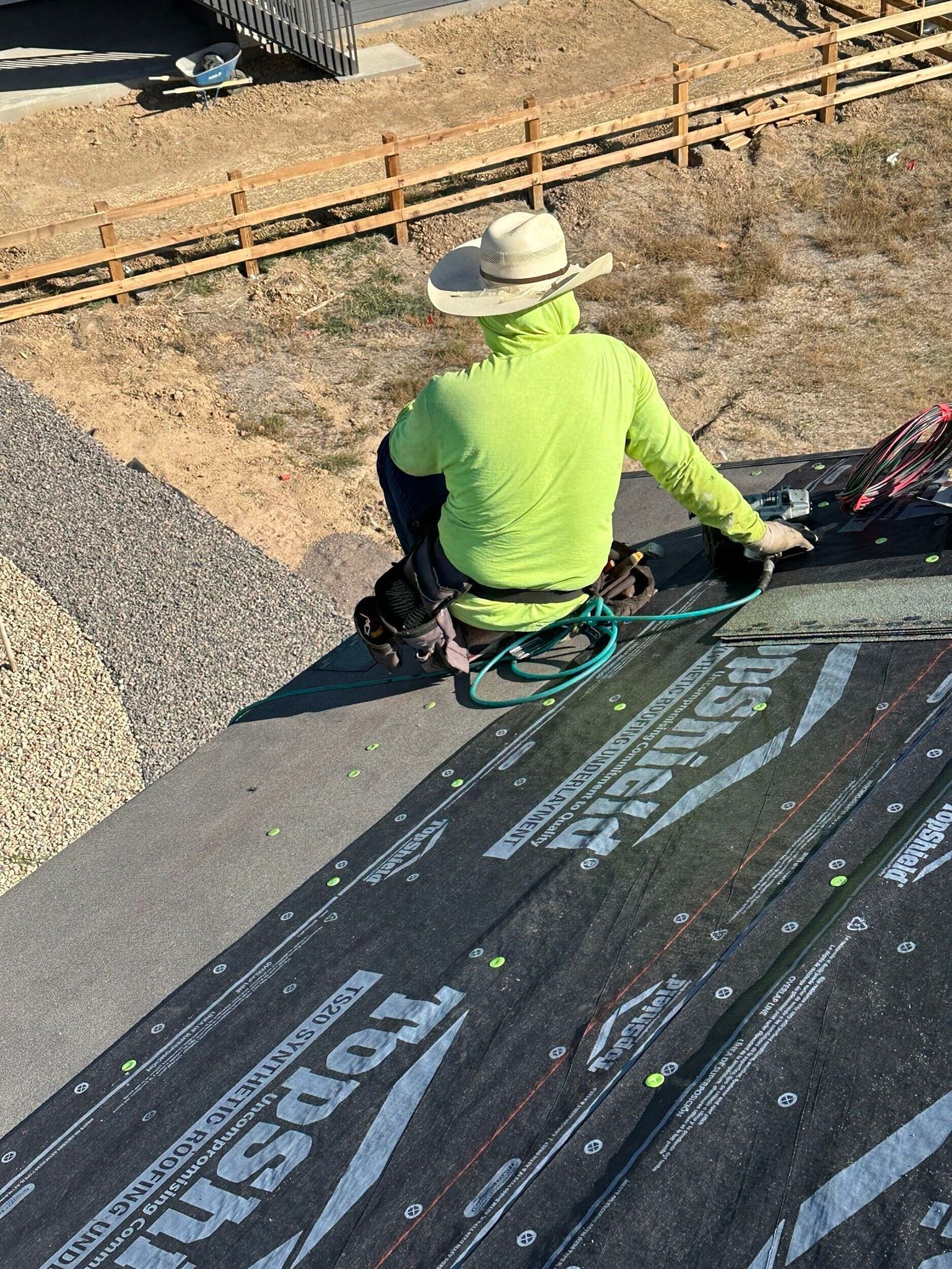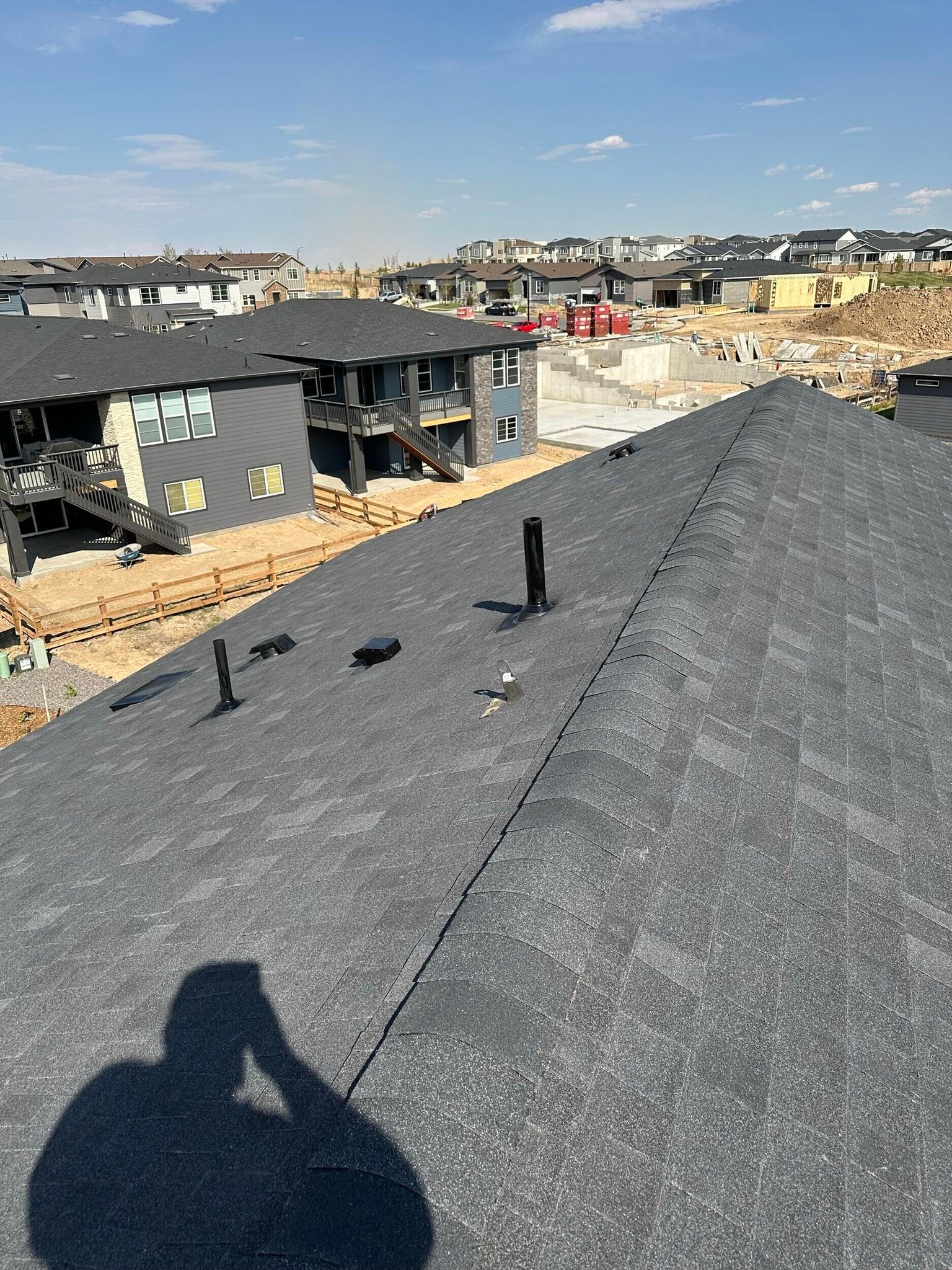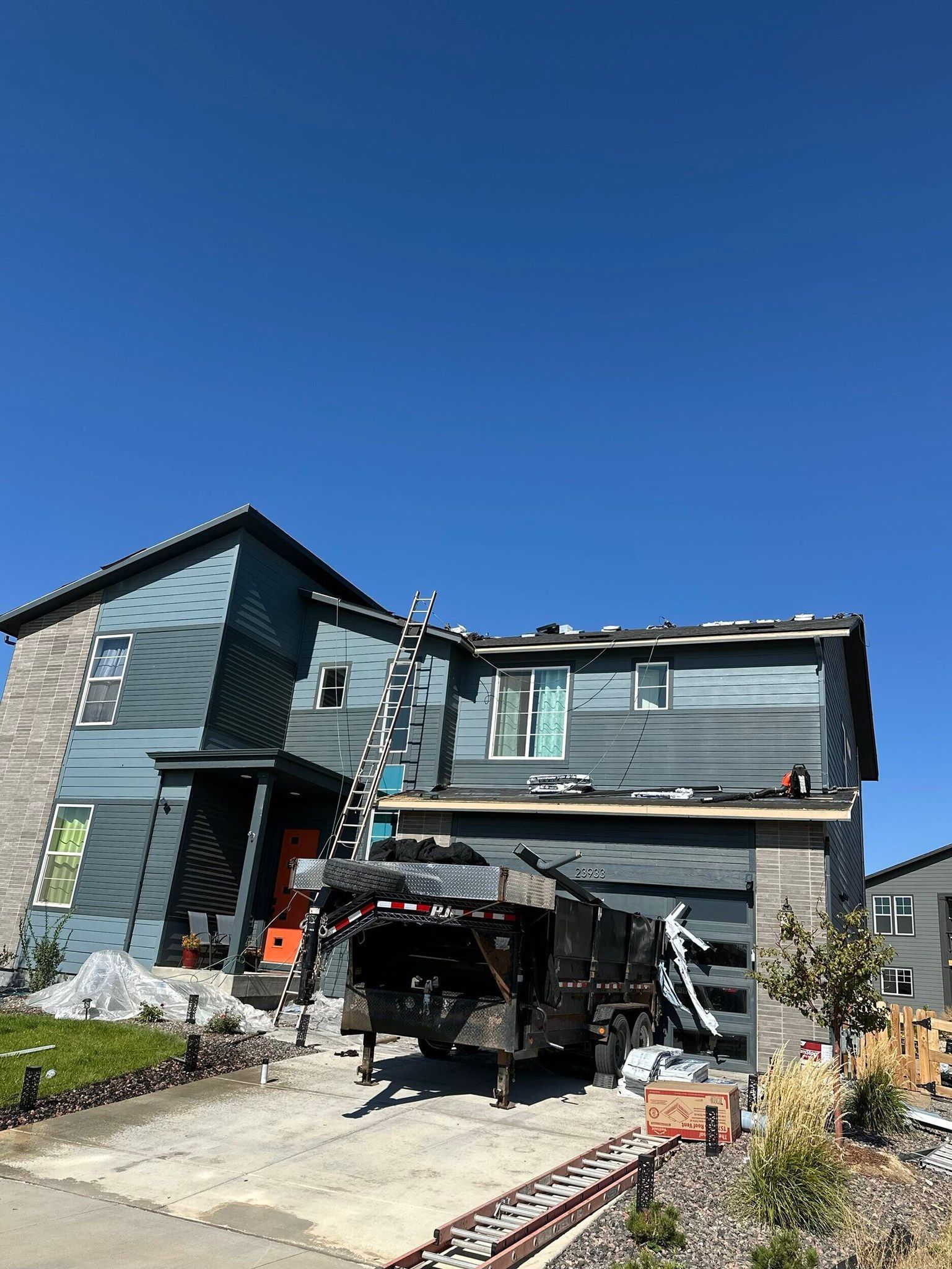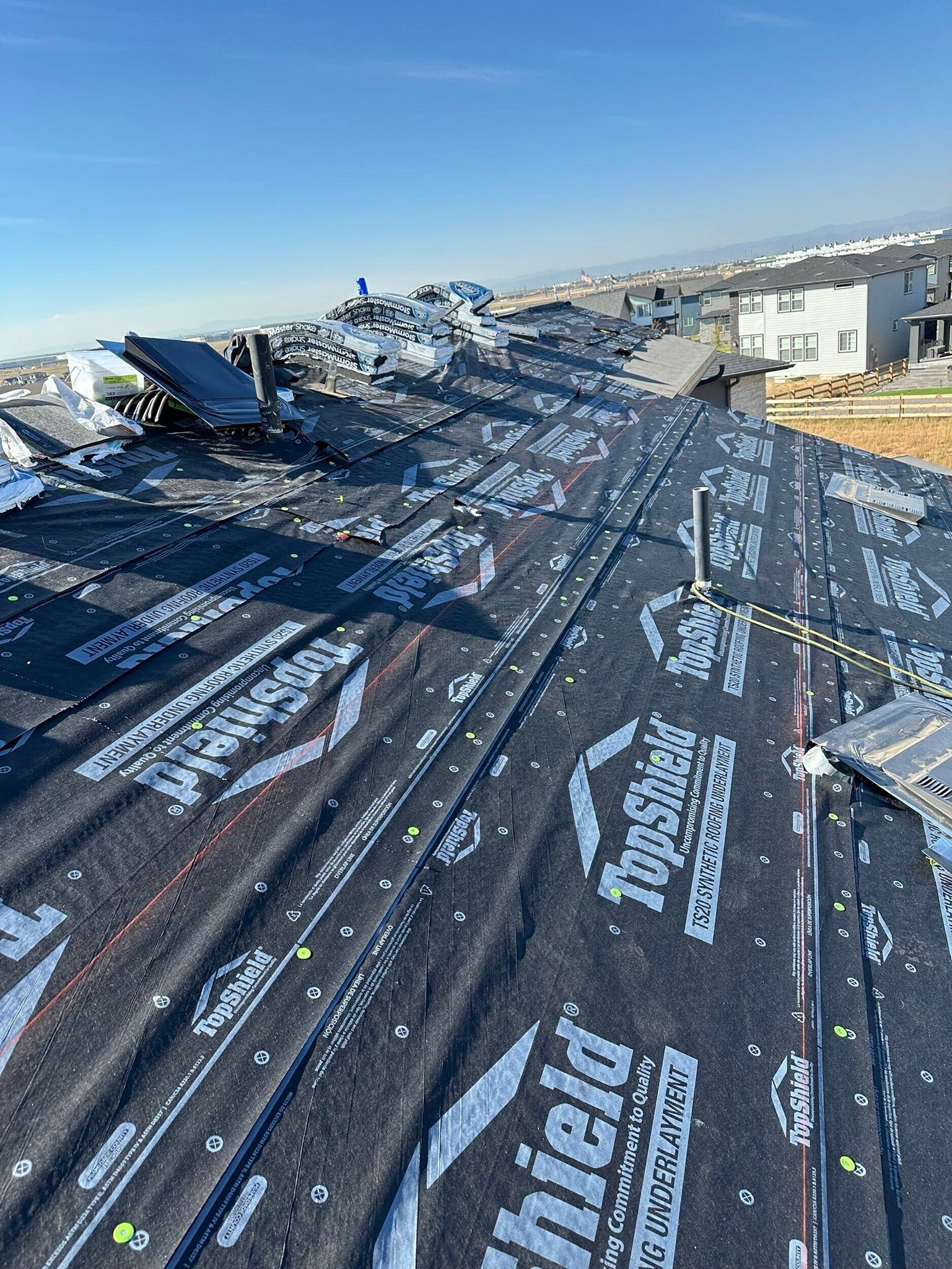The Shortened Lifespan: How Often You Really Need to Replace a Roof in Colorado
If you own a home in Colorado, you know the mountains aren't the only thing that's harsh—the weather is, too. Because of the state's severe climate, the simple answer to how often do you need to replace a roof in Colorado is: more frequently than most homeowners across the U.S.
While a standard asphalt shingle roof might last 20 to 30 years in a milder climate, Colorado's unique combination of extreme conditions often cuts that lifespan down to 15 to 20 years. In areas highly prone to storm damage, that number can be even shorter. Replacing a roofing system is a major investment, so understanding the forces at work on your home is crucial.
The "Colorado Climate Tax" on Your Roof
Colorado's unique environmental factors shorten the life of even the highest-quality materials. These factors are key reasons for needing a premature roof replacement:

1. Hail Damage: The Number One Culprit
Colorado is notorious for hailstorms, which are the leading cause of early roof failure. Hailstones can severely damage a roof structure in several ways:
- Granule Loss: For asphalt shingles, hail knocks off the small ceramic granules that protect the shingle's asphalt layer from the sun. Once these are gone (often seen collected in gutters), the shingle begins to age rapidly.
- Shingle Bruising: Even hail that doesn't immediately cause a leak can create soft spots or cracks in the shingle mat, leading to future leaks and making the material brittle.
- Impact Cracking: Large hail can crack or chip harder materials like clay or concrete tile, requiring immediate roof repairs.
2. Intense UV Radiation and High Altitude
The higher your home's elevation, the more direct and intense the ultraviolet (UV) sunlight. This high-altitude sun accelerates the breakdown of almost every roofing material through a process called photo-oxidation:
It causes asphalt shingles to become brittle, dry out, and crack.
It degrades the protective coatings on metal and flat commercial roofing materials, such as TPO and EPDM membranes.
3. Freeze-Thaw Cycles
Colorado experiences dramatic temperature swings. A sunny day can thaw snow and ice, only for temperatures to plummet below freezing at night.
- This constant freeze-thaw cycle causes water that has seeped into tiny cracks to expand as it turns to ice. This expansion forces the cracks open wider, eventually leading to shingle detachment and major water damage.
- It's a primary reason for the formation of ice dams, which force melting water underneath the roofing material.


Lifespan by Roofing Material
The expected roof life expectancy varies dramatically based on what material you chose for your home improvement project:
Roofing MaterialExpected Colorado LifespanDurability and Maintenance NotesStandard 3-Tab Asphalt Shingles15–20 YearsThe most budget-friendly option, but the least resistant to wind and hail.Architectural (Laminated) Shingles20–30 YearsThicker and more durable than 3-tab; many feature a better wind rating.Impact-Resistant Shingles (Class 4)25–40 YearsDesigned to withstand large hail; often qualify for insurance discounts.Standing Seam Metal Roofing40–70 YearsExcellent resistance to fire, hail, and high winds. Snow sheds easily.Tile (Concrete or Clay)50–100+ YearsVery long-lasting, but heavy (requires strong roof structure) and individual tiles can be broken by hail or poor installation.
Ekspor ke Spreadsheet
Key Signs You Need a Roof Inspection
Don't wait until you see a leak inside your living room. Schedule a professional roof inspection if you notice any of these red flags, especially if your roof is over 15 years old:
- Curling or Clawing Shingles: The edges of the shingles are turning upward or downward.
- Bald Spots or Excessive Granule Loss: You can see black asphalt showing through the colored granules, or you find piles of shingle grit near your downspouts.
- Sagging or Drooping Decking: The roof line looks uneven. This can indicate a problem with the underlying roof decking or support.
- Damaged Flashing: Look for loose or damaged metal strips (flashing) around chimneys, vents, and skylights, as these areas are common spots for leaky roof issues.


The Role of Your Homeowner's Insurance
In Colorado, many roof replacements are triggered not by age, but by catastrophic damage from a hailstorm. If you suspect your roof has been damaged by hail, contact a certified roofing contractor for a damage assessment before filing a claim. They can help you understand the extent of the damage and navigate the insurance claim process.
Ultimately, a well-maintained roof—one that is inspected at least once a year and immediately after severe
severe weather—will always reach or exceed its maximum
material lifespan.

